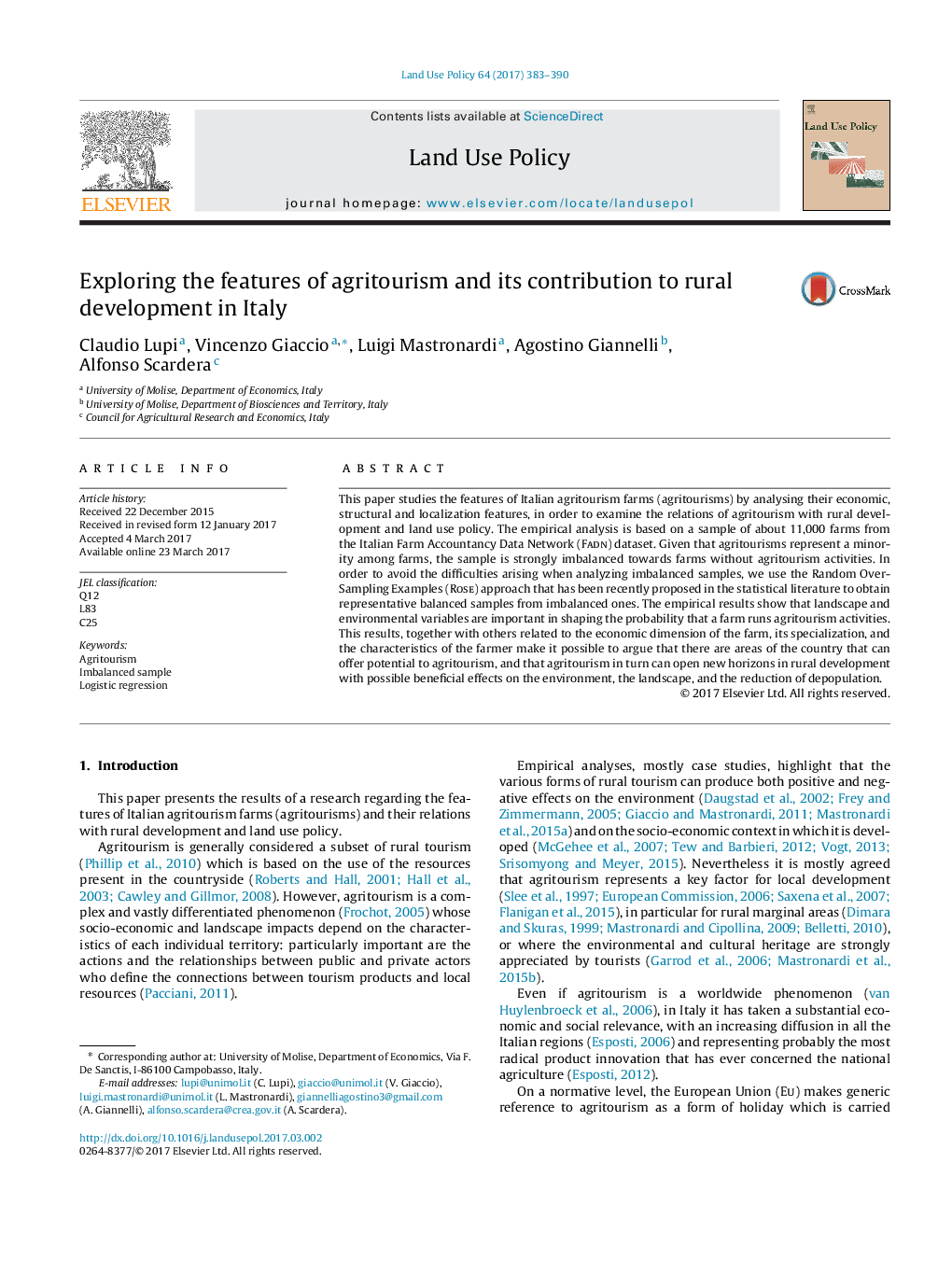| Article ID | Journal | Published Year | Pages | File Type |
|---|---|---|---|---|
| 6460861 | Land Use Policy | 2017 | 8 Pages |
â¢Agritourisms in Italy can be run only as secondary activities, jointly with farming.â¢Landascape and environmental variables are important for agritourism activities.â¢Agritourism offers a contribution to landscape protection and to rural development.â¢The empirical analysis uses the Italian Farm Accountancy Data Network sample.â¢The empirical model is estimated using the Random OverSampling Examples approach.
This paper studies the features of Italian agritourism farms (agritourisms) by analysing their economic, structural and localization features, in order to examine the relations of agritourism with rural development and land use policy. The empirical analysis is based on a sample of about 11,000 farms from the Italian Farm Accountancy Data Network (Fadn) dataset. Given that agritourisms represent a minority among farms, the sample is strongly imbalanced towards farms without agritourism activities. In order to avoid the difficulties arising when analyzing imbalanced samples, we use the Random OverSampling Examples (Rose) approach that has been recently proposed in the statistical literature to obtain representative balanced samples from imbalanced ones. The empirical results show that landscape and environmental variables are important in shaping the probability that a farm runs agritourism activities. This results, together with others related to the economic dimension of the farm, its specialization, and the characteristics of the farmer make it possible to argue that there are areas of the country that can offer potential to agritourism, and that agritourism in turn can open new horizons in rural development with possible beneficial effects on the environment, the landscape, and the reduction of depopulation.
